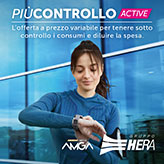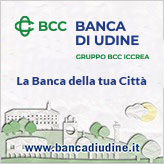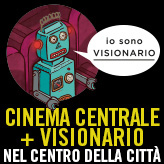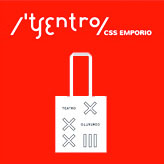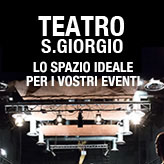Alan e il mare
The story of Alan Kurdi, the little Syrian refugee whose body was washed ashore at Bodrum in September 2015, is almost too painful to tell. Nonetheless we will try to tell it to other children of the same age but more fortunate. This is a story told not just through events, accounts and the memories of his father, but also by opening up a passage to dreams, to a life that still holds possibilities and the imagining of a tomorrow that was not to be. Alan, who becomes a brother to the seaweed and coral, a fish-child who will not let us forget all the others, the too many children still fleeing from their countries.
suitable for children above 8 years old
assistant dramaturg Gioia Salvatori
on video Elena Aimone
lighting Danilo Facco
movement director Gaia Clotilde Chernetich
costumes Giuliano Scarpinato
graphic design Rooy Charlie Lana
Alan and his father Abdullah leave their home in Syria one night. The war is snatching away schools, houses and trees. They board a small, rickety boat, full of souls hoping to get very far away. That night, a large wave capsizes the boat, as if it were made of paper. Alan slips away from his father’s strong arms and falls into the deep sea, where he becomes a brother to the seaweed, the coral, and the colourful anemones. A fish-child, who, from that moment, will belong to the water forever.
From then on, at the same time every day, Abdullah returns to the sea that has taken Alan away, bringing him beautiful flowers. He prays for his child with all his heart, until one day at dawn Alan hears his prayer and emerges from the waves to embrace his daddy. But only for a brief moment: when the sea tolls, Alan must return. Those brief moments are not enough for Abdullah; he doesn’t want to live without his child. He decides to go to him, into the sea. Alan takes him by the hand and shows him his new home. But, once again, Abdullah can only stay for a short time. He does not belong to the sea but to the land, and he must return there to continue living and be happy, as his special child whispers in his ear.
Too painful to tell. The story of the little Syrian refugee Alan Kurdi
The story of Alan Kurdi, of how the little Syrian refugee came to drown in September 2015 and was washed up on the beach of Bodrum in Turkey, represents a turning point for our anesthetised perception of the dramatic ordeal that millions of men, women and children have suffered in recent years, fleeing their countries (Syria, Iraq, Afghanistan) to reach Europe. The inescapable power of the image of Alan’s little body is a point of no return. Nilufer Demir, the reporter that shot that iconic image, tells us it was so for her: “I was petrified, the only thing I could do was to make his outcry heard by all”. It was an experience beyond any possible understanding of suffering for Alan’s father, Abdullah al - Kurdi who also saw his wife Rehan and other son Galip die in the same way.
The very moment that image broadcast by the evening news hit my eyes and conscience, a question started tormenting me: how could this be told to children scarcely older than the boy who drowned? How could we explain the absurd wiping away of such a young life? How can we tell this story, when it is too painful to tell?
For several years, I have worked in the delicate field of theatre for young audiences. The main aim is to focus young people’s attention on difficult and complex issues, questions for which there are no easy or necessarily edifying solutions. I have a very high opinion of my young spectators and the highest esteem for their noble nature and their unceasing ability to surprise us with their sensitivity and intelligence.
I think it is imperative to find a way to tell them about the often tragic odyssey that children of their age endure when they have to flee their countries of origin. This is the reason why I would like to try and tell Alan’s story in the theatre, even though it is still a painfully recent event.
It is a theatrical tale I chose to tell from two points of view: that of Abdullah al Kurdi, the father of the child, and an imagined one, that of Alan projected into a future that never was.
Production: words, narration, images
To tell such a dramatically recent story we cannot disregard the words of the people who witnessed it. The words of Abdullah Kurdi and Nilufer Demir were an invaluable resource, together with the many incredible stories of young refugees who, unlike Alan, made it through their personal odysseys, or those of their families. The truth of these stories is essential in a work like this, which aims to be a tribute to the lives of real people.
However, theatre offers greater opportunities compared to those of cinema or television, which are more akin to news reporting. Dreams and transfiguration can amplify one person’s story, making it the tale of many others. If Alan’s story were to remain that of just one child, there would be no point in telling it. For this reason, as well as the words and the tales of people’s lives, there will be images and an “imagined” life. Images created in video-mapping will be projected to animate that which worlds cannot express: the dreams, expectations, desires and imagination of little refugees like Alan Kurdi.
The video projection brings to life the place where the voice and presence of Alan comes from: a sort of Atlantis, a small underwater Garden of Eden, where the little boy’s life has become entangled in the sea foam, coral and sand. The spectators, be they young or old, will be asked to embrace his existence, the real one, but also, and most importantly, the one that is imagined and hoped for. It is as if they were bringing a shell to their ear, to hear the distant sound of the sea wherever they might be.
Giuliano Scarpinato
Images
Texts
Scheda di distribuzione Alan e il mare [156 Kb]Manifesto Alan e il mare - progetto grafico Rooy Charlie Lana [1854 Kb]Cartolina fronte Alan e il mare - progetto grafico Rooy Charlie Lana [528 Kb]Cartolina retro Alan e il mare - progetto grafico Rooy Charlie Lana [2028 Kb]Dossier Alan e il mare - progetto grafico Rooy Charlie Lana [1006 Kb]Press reviews
Emilia Costantini, Il teatro dei ragazzi - Corriere della Sera, 2 febbraio 2019 [642 Kb]Francesca Romana Lino, 'Alan e il mare': una favola moderna che rievoca una tragedia reale - rumor(s)cena, 21 aprile 2018 [345 Kb]Francesca Bini,“Fare il giro”, per una pedagogia delle emozioni. Intervista con Giuliano Scarpinato - Planetarium-teatroragazziosservatorio.it, 5 aprile 2018 [407 Kb]Mario Brandolin, Il naufragio del piccolo Alan per un teatro dell'accoglienza - Messaggero Veneto, 22 maggio 2017 [442 Kb]Rodolfo Sacchettini, Fiabe melanconiche dei nostri giorni tristi, 18 maggio 2017 [163 Kb]Sergio Lo Gatto, Alan e il mare di Giuliano Scarpinato. Una favola di redenzione - Planetarium, 11 maggio 2017 [157 Kb]Sergio Lo Gatto, Alan e il mare di Giuliano Scarpinato. Una favola di redenzione - Teatro e Critica, 11 maggio 2017 [121 Kb]Piera F. Mastantuono, Alan e il mare - Associazione Carta di Roma, 4 maggio 2017 [185 Kb]Giovanna Maria Fagnani, Il teatro per ragazzi può raccontare le morti in mare? - corriere.it, 4 maggio 2017 [171 Kb]Severino Colombo, Un altro futuro al piccolo Aylan annegato sulla costa turca - Corriere della Sera-La Lettura, 30 aprile 2017 [1184 Kb]Tour
debut
5 May 2017 h 5.30 pm
Festival Segnali
Milano, Teatro Verdi
tour
20 May 2017 h 8.30 pm
In\Visiblecities - Urban Multimedia Festival
Gorizia, Kulturni Dom
7-8 February 2018 matinée
Latina, Teatro Gabriele D'Annunzio
1, 2, 5, 6, 16 March 2018
ContattoTIG 17-18
Udine, Teatro S. Giorgio
4 March 2018 h 5 pm
ContattoTIG in famiglia 17-18
Udine, Teatro S. Giorgio
8 March 2018 h 9 am and 4 pm
9 March 2018 h 9 am
Bagnacavallo (RA), Teatro Goldoni
10 March 2018
Santa Sofia (FC), Teatro Mentore
12 March 2018
ContattoTIG 17-18
Cervignano (UD), Teatro Pasolini
13 March 2018 matinée
Cormons (GO), Teatro Comunale
14-15 March 2018 matinée
Tolmezzo (UD), Teatro Candoni
21 March 2018
Conselice (RA), Teatro Comunale
25 March 2018 h 4 pm
26 March 2018 matinée
Forlì, Teatro Diego Fabbri
27-28 March 2018 matinée
Rome, Teatro Sala Umberto
8, 9, 10 April 2018
Rome, Teatro Quarticciolo
12-13 April 2018 matinée
Ferrara, Teatro Boldini
14 April 2018 h 9 pm
Scandicci (FI), Teatro Studio Mila Pieralli
17-18 April 2018 matinée
Piacenza, Teatro Filodrammatici
20 April 2018 h 9.30 pm
Vimodrone (MI), Sala Everest
29 April 2018 h 5 pm
Marsala (TP), Teatro Impero
13 December 2018 h 8.30 pm
14 December 2018 matinée
Trieste, Teatro Miela
26 March 2019 matinée
Vicenza, Teatro Astra
27 March 2019 matinée
Mira (VE), Teatro Villa dei Leoni
31 March 2019 h 5
1 April 2019 matinée
Lucca, Teatro Tenuta dello scompiglio
3-4 April 2019
Padua, Piccolo Teatro Don Bosco


















